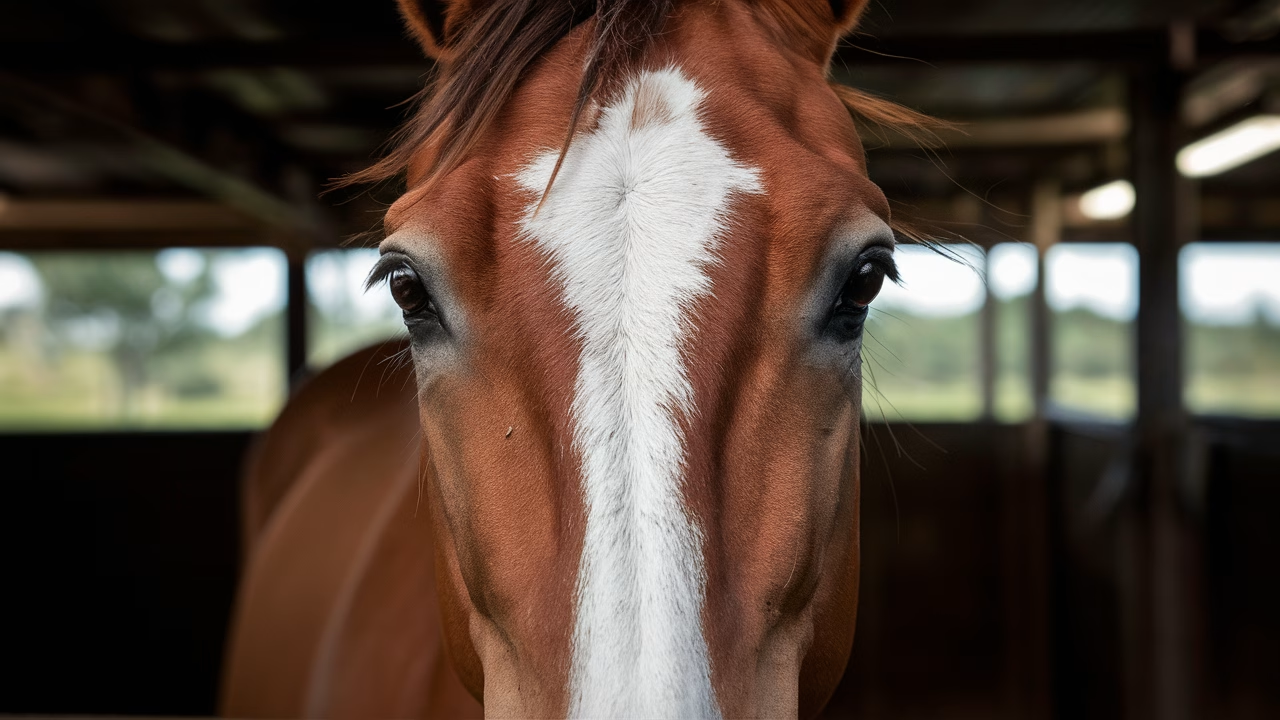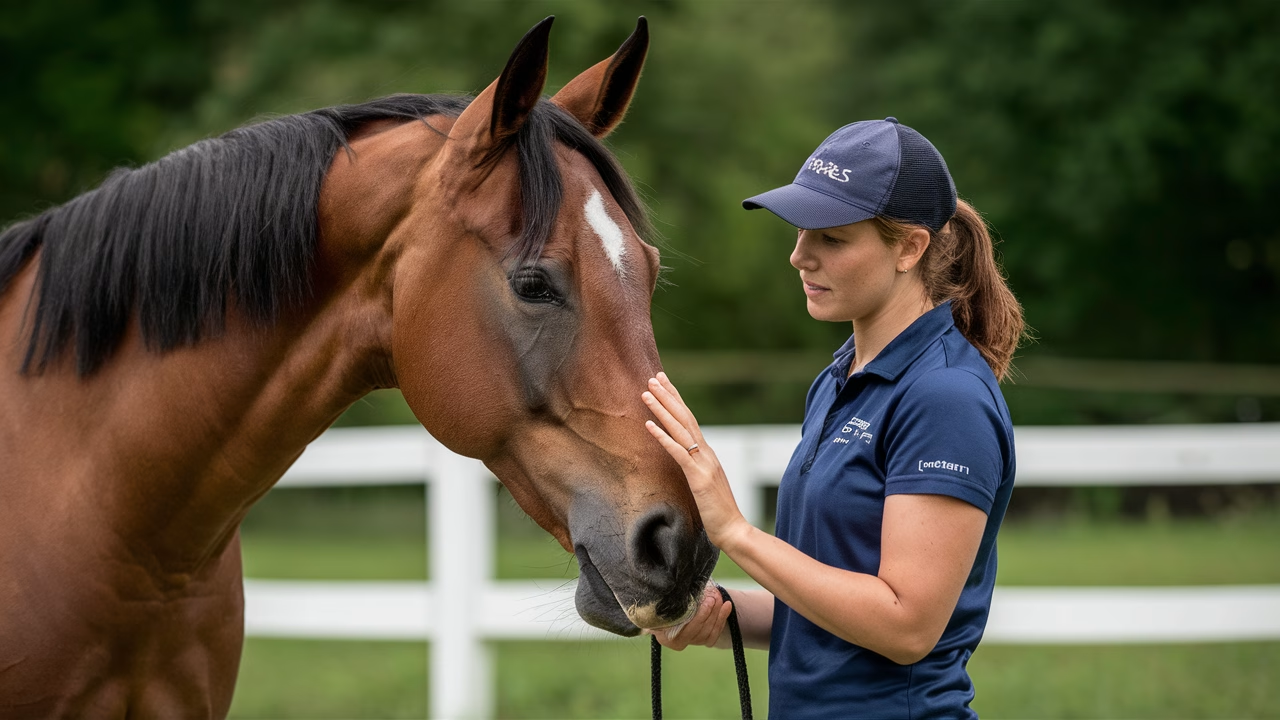What Are Horse Facial Expressions Telling Us?
Horses can express an impressive 17 distinct facial expressions—almost as many as humans. But what do these horse facial expressions actually mean? From the subtle twitch of an ear to the flick of a nostril, every movement paints a picture of your horse’s inner emotional world. Understanding horse emotions through these expressions can transform your connection from routine care to informed empathy and trust.
TL;DR: Summary – Understanding the 17 Facial Expressions of Horses
- Horses have 17 distinct facial expressions recognized by science, rivaling dogs and even chimpanzees in communication complexity.
- Each part of the horse’s face—eyes, ears, nostrils, lips, jaw—contributes to conveying different emotions like fear, contentment, alertness, or discomfort.
- Learning to interpret these expressions helps you respond more appropriately to your horse’s emotional needs and behavioral signals.
- Horse facial expressions work in tandem with other body signals like ear position, tail movement, and posture.
- We explore real-life examples, practical tips, and decoding strategies through the lens of horse psychology and communication.
The Science Behind Horse Emotions and Communication
Ever looked at your horse and thought, “I wish you could talk to me”? The truth is—they already do. Just not in words. Horses are incredibly expressive, and much of their equine communication happens through horse body language and facial cues. As prey animals, they evolved nuanced non-verbal signals for survival and social bonding. Miss these signs, and we miss what they’re truly telling us in quiet whispers rather than loud actions.
This is where understanding horse facial expressions becomes one of the most powerful tools in your equine relationship toolbox. In fact, horses have been scientifically shown to make 17 distinct facial movements, a system called EquiFACS (Facial Action Coding System for Equines), developed by researchers to classify and understand equine expressions across emotional states. This research reveals that interpreting horse facial expressions is crucial for understanding equine behavior patterns.
 Understanding Equine Facial Expressions
Understanding Equine Facial Expressions
Let’s break down the 17 horse facial expressions and link them with emotional context and practical significance. Some are subtle, others dramatic, but all are important for understanding horse emotions:
| Facial Area | Action | What It May Mean |
|---|---|---|
| Eyes | Wide open with visible sclera | Fear, alertness |
| Ears | Swiveling, pinned, forward | Interest, irritation, focus |
| Nostrils | Dilated, flared | Excitement, exertion, fear |
| Muzzle | Relaxed lips, tight jaw, lip licking | Relaxation, tension, submission |
| Chin | Tension or dimpling | Stress or anxious thinking |
When you combine these equine body language cues, you gain a clearer picture of the emotional undercurrent driving your horse’s behavior. For example, a flared nostril alone might suggest activity. Pair it with a wrinkled brow and pinned ears? Now we’re looking at fear behavior that requires immediate attention.
Interpreting Common Horse Emotions Through Facial Expressions
Let’s bridge the science into real life. Below are some common emotional states and how they reveal themselves through horse facial expressions:
Happy or Relaxed Horse Expressions
Signs of a happy horse include soft eyes (low eyelid tension), relaxed ears that gently switch directions, loose lips, and steady nostrils. Their overall face looks soft, calm, and open. You might see chewing or licking as signs of processing and comfort—classic indicators in horse body language.
Fear or Startle Expressions
When experiencing fear, your horse may bulge its eyes, revealing the sclera. Nostrils flare sharply, and ears lock forward or swing nervously. The lower jaw may tighten. These horse facial expressions are often sudden and exaggerated—indicating a rapid-fire stress response that affects equine behavior.
Pain or Discomfort Signs
Unlike fear, expressions from pain are often more prolonged. They include flattened ears, a fixed glare (often with visible tension around the eyes), clamped lips, and furrowed brow or prominent chin tension. It’s the “equine grimace” and shouldn’t be ignored when analyzing horse emotions.
Alertness or Curiosity Indicators
When focused, ears stand tall and eyes widen—but more from interest than fear. Nostrils may almost pinch as the horse tightens its muzzle slightly, mentally locked in on you or the environment. These horse facial expressions show positive engagement.
Case Studies: Real-Life Examples of Horse Facial Expressions
Let’s put theory into practice. As a veterinarian, I often use these facial cues as preliminary assessments before even touching the horse, relying heavily on horse body language analysis.
Case 1: “Fence Worry”
A gelding watched his herd through a fence—ears forward, eyes wide, nostrils extended. The client thought he was relaxed. In truth, his horse facial expressions revealed overwhelming separation anxiety. Noticing his nasal flares and eye tension helped the client change his fencing style and feeding schedule to reduce stress.
Case 2: The “Off” Mare
A dressage mare wasn’t performing well. Her owner was puzzled—she wasn’t lame. Closer look at her horse facial expressions? She had half-pinned ears, tight lips, a wrinkled chin, and droopy lower eyelids—a low-grade pain expression. Ultrasonography confirmed early signs of kissing spine. Early diagnosis through reading horse emotions = faster recovery.
 Tips for Communicating with Your Horse through Body Language
Tips for Communicating with Your Horse through Body Language
Now that you understand horse facial expressions, here are practical ways to incorporate this knowledge into your everyday bonding, training, and care routines:
- Observe without agenda: Spend 3–5 silent minutes daily just watching your horse’s facial expressions without a task.
- Compare across contexts: Does your horse wrinkle their mouth when handled, but not when feeding? Changes in horse emotions can be clues.
- Use a mirror journal: Note behaviors, posture, and horse facial expressions after activities—like riding, vet visits, or turnout.
- Pair with touch: Look at your horse’s facial expressions as you groom or tack up. Where does tension creep in? What changes with pressure?
- Never isolate cues: Horse facial expressions always work with posture, breathing, and sound in equine body language. Combine for more accurate interpretation.
Building Your Horse Facial Expression Reading Skills
Mastering horse facial expressions takes practice, but you can accelerate your learning by focusing on specific areas. Start with the ears—they’re the most obvious indicators of horse emotions. Then progress to eye expressions, which reveal deeper emotional states. Finally, observe subtle mouth and nostril changes that complete the picture of your horse’s emotional state.
Remember that equine communication is contextual. The same horse facial expressions might mean different things during grooming versus under saddle. Understanding these nuances in horse body language will make you a more effective horseperson.
Conclusion: Building a Deeper Connection with Your Equine Companion
When you become fluent in your horse’s facial expressions, every moment together becomes a richer conversation—not just observation. From a flicker of tension in the jaw to a spark of curiosity in the eyes, these emotional breadcrumbs lead us to greater understanding of horse emotions, prevention of problems, and enrichment of daily life.
Like any language, fluency in reading horse facial expressions takes time—but the results? A safer, happier, more attuned partnership grounded in trust. You don’t just manage your horse—you connect with them through understanding their equine body language. One ear flick, one blink, one soft lip at a time.
Frequently Asked Questions
Q1: How can I begin to learn horse facial expressions?
Start by observing your horse daily during neutral times like grazing or grooming. Use a simple notebook to track recurring horse facial expressions and match them with emotional responses. Pair facial awareness with overall equine behavior patterns.
Q2: Are facial expressions the same for all horses?
While many horse facial expressions are universal, individual horses may show subtleties based on breed, personality, or experience. Some are more “expressive” than others, especially in hot-blooded or more social breeds.
Q3: How do I know if my horse is happy?
Signs of a happy horse include relaxed eyes, slow blinking, soft lips, content chewing motions, and calm ears that gently move side to side. These horse facial expressions often coincide with a calm stance and steady breathing rate.
Q4: Can facial expressions help me detect pain early?
Yes—horse facial expressions like tightened jaw, clamped lips, droopy eyelids, asymmetrical ears, and a furrowed brow may indicate discomfort or pain. These cues often precede physical symptoms and can signal the need for veterinary attention.
Q5: What causes changes in facial expression?
Horse facial expressions can shift due to environmental stimuli, social interaction, pain, confusion, or learning processes. Maintaining situational awareness when reading horse emotions improves your analysis.
Q6: Can riders unknowingly trigger bad facial expressions?
Yes. Poor saddle fit, harsh cues, or even frustration during groundwork can lead to tense faces. Being mindful of your horse’s immediate horse facial expressions helps you adjust riding and training in real time.
Q7: Is there a difference between facial expressions during rest and work?
Absolutely. At rest, horse facial expressions are more subtle and tied to comfort. During work, they may become more exaggerated based on difficulty, pressure, or confusion. Observing both states is vital for accurate analysis of horse emotions.

 Understanding Equine Facial Expressions
Understanding Equine Facial Expressions Tips for Communicating with Your Horse through Body Language
Tips for Communicating with Your Horse through Body Language
